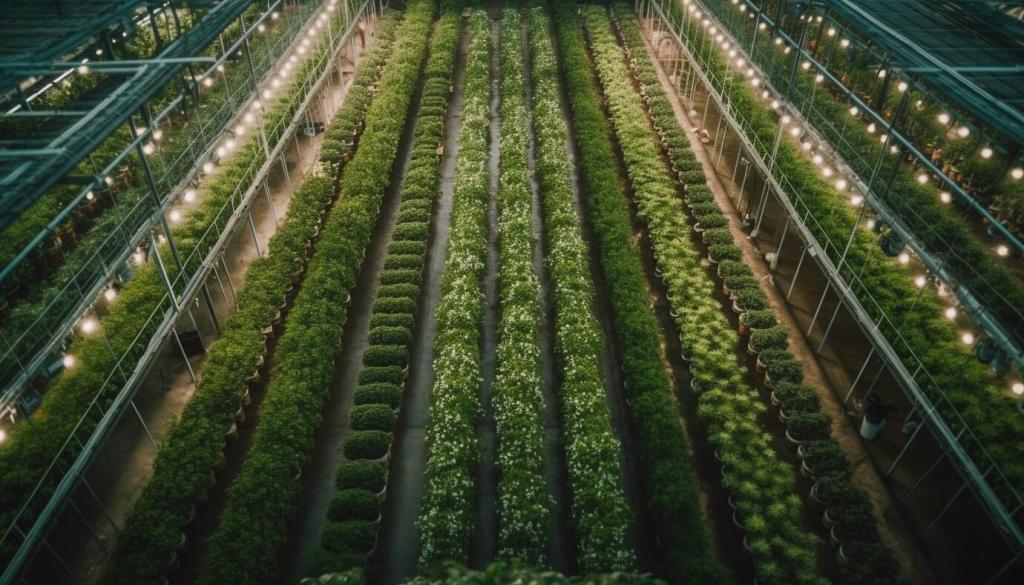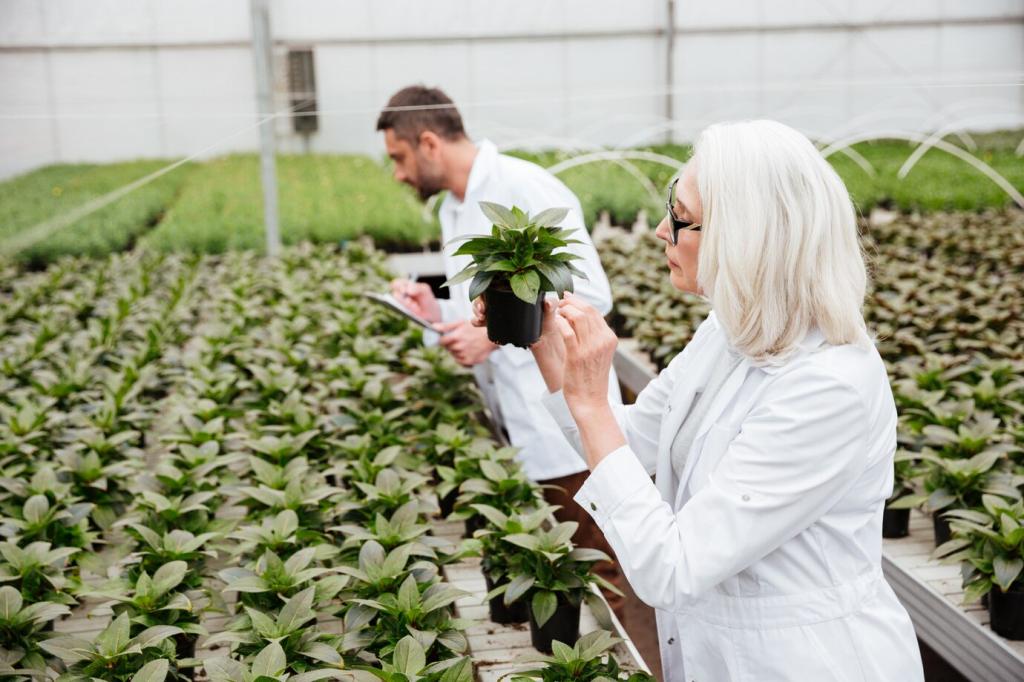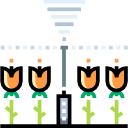Innovative Urban Farming Techniques Transform Cities
Urban landscapes are undergoing a remarkable transformation as innovative farming methods gain traction within city environments. With increasing populations, resource constraints, and the urgent need for sustainable food sources, cities are embracing forward-thinking urban agriculture. These groundbreaking approaches not only provide fresh produce but also foster environmental stewardship, community engagement, and economic resilience. Read on to explore how urban farming is reshaping city living and creating greener, more self-sufficient urban spaces.

High-Tech Controlled Environments
Modern vertical farms are equipped with cutting-edge technology that precisely monitors and adjusts climate variables such as temperature, humidity, and light. These systems enable optimal growing conditions, regardless of external weather patterns, thereby maximizing both yield and quality. Automation plays a significant role in reducing manual labor and energy consumption. The integration of sensors, AI, and data analytics ensures that plants receive exactly what they need, leading to sustainable production and resource efficiency while reducing waste.

Space Optimization in Urban Infrastructure
Urban centers are notorious for their lack of arable land, but vertical farming turns this challenge into an opportunity. Abandoned factories, commercial rooftops, and even shipping containers are being reimagined as multi-story farms. By utilizing underused and unconventional spaces, city dwellers reap the benefits of fresh, healthy food grown close to where they live. Space optimization not only supports local economies but also lessens dependency on long-haul transportation, cutting down fuel consumption and emissions significantly.

Nutrient-Rich Urban Harvests
Vertical farming’s controlled approach allows for the fine-tuning of nutrient solutions, resulting in plants that are not only visually appealing but also packed with flavor and nutrition. This precision helps improve the quality of food available to urban populations, addressing dietary deficiencies and contributing to overall public health. Furthermore, because crops are harvested at their peak ripeness and delivered swiftly, they retain their maximum nutritional value, making urban vertical farms critical in cities’ efforts to enhance food security.

Rooftop Gardens: Turning Skyscraper Tops Into Lush Oases
One of the most significant benefits of rooftop gardens is their ability to combat the urban heat island effect. By covering large, heat-absorbing roofs with plants, cities can significantly lower surrounding temperatures. The transpiration and shading provided by greenery reduce energy needed for cooling buildings, helping cities become more resilient in the face of climate change. As more buildings adopt this technology, urban microclimates improve, making city life more comfortable and sustainable.

Precision Water and Nutrient Management
Hydroponics systems excel in delivering tailored amounts of water and nutrients directly to plants, minimizing waste and runoff. By recycling water within closed loops, these systems use up to 90% less water than conventional farming methods. This efficiency is crucial for urban environments facing water scarcity. The ability to monitor and adjust nutrient delivery fosters plant health and maximizes productivity, further supporting the sustainability of urban food systems.
Urban-Friendly Compact Setups
One of hydroponics’ greatest strengths is its adaptability to compact urban living. Units can be installed in kitchens, balconies, or even offices, allowing city dwellers to grow their produce regardless of space limitations. Commercial hydroponic farms can be tailored to fit within disused buildings or underutilized lots, maximizing otherwise wasted space. These modular systems offer a scalable solution that brings fresh food production directly into the urban fabric.
Enabling Year-Round Harvests
Because hydroponic systems are typically housed indoors or in protected environments, they are shielded from seasonal fluctuations and adverse weather. This reliability allows for consistent, year-round crop production that meets the demands of urban populations without interruption. Reliable harvests translate into food security, price stability, and a constant supply of fresh, nutrient-dense crops—advantages crucial for cities facing unpredictable weather due to climate change.
Aquaponics: Symbiotic Farming for Sustainable Cities

A Closed-Loop Nutrient Cycle
At the heart of aquaponics is its natural recycling process: fish waste provides organic nutrients for plants, while plant roots extract and purify the water before it returns to the fish tanks. This symbiosis results in minimal waste and optimal resource use, reducing the need for artificial fertilizers and limiting environmental impact. Urban farms employing aquaponics can produce food sustainably, making efficient use of water, nutrients, and infrastructure.

Diversifying Urban Food Sources
Unlike many other urban farming techniques, aquaponics yields both plant-based and animal-based foods. This diversity benefits urban residents by offering a wider array of locally sourced nutrition, including leafy greens, herbs, and various edible fish. The ability to harvest both protein and produce from the same system fosters resilience in urban food networks and introduces city dwellers to new farming and culinary experiences.

Compact Systems for Urban Homes and Schools
Aquaponics systems are highly customizable, ranging from large-scale commercial farms to small setups suitable for classrooms or apartments. Educators and families can use desktop aquaponics kits to teach children about ecosystems, biology, and sustainability. These hands-on experiences help foster future generations of environmentally conscious urban farmers and increase public support for sustainable agriculture in cities.

Strengthening Farmer-Consumer Relationships
CSAs bridge the gap between growers and consumers, making food sourcing more transparent and personal. By meeting their farmers face-to-face, urbanites gain a deeper understanding of where their food comes from, how it’s grown, and the challenges faced by local agriculture. These connections foster trust, encourage responsible farming practices, and help shape more sustainable urban food-related behaviors.

Reducing Food Waste and Supporting Seasonality
By purchasing a share of the harvest, CSA members accept a wide variety of produce based on seasonal availability, reducing the pressure on farmers to meet uniform supermarket standards. This approach encourages people to rediscover forgotten crops, experiment with new recipes, and embrace the natural rhythm of agriculture. It also allows farmers to plan more effectively and minimize food waste, as all crops are pre-sold and distributed locally.
Edible Landscaping: Integrating Food Into Urban Design
Redefining Public Green Spaces
Cities are reimagining parks, community gardens, and roadside verges as not just decorative, but productive lands. Edible plants intermingle with ornamental species, providing year-round access to fresh produce for anyone passing by. This rethinking of public space supports communal foraging, encourages outdoor activity, and contributes to urban food resilience. City planners and landscape architects increasingly design green spaces that nourish both the body and the soul.
Food Forests and Biodiversity Corridors
Edible landscapes can function as miniature food forests, replicating the richness and resilience of natural ecosystems. Layers of fruit-bearing trees, shrubs, and groundcovers create diverse habitats that support pollinators and wildlife, while providing abundant food for people. These corridors connect fragmented habitats across the city, fostering biodiversity and ecological health within heavily built-up environments. By enhancing both food security and nature conservation, edible landscaping is a win-win for urban communities.
Fostering Environmental Education and Engagement
Edible landscapes are powerful educational tools, providing hands-on learning opportunities for all ages. By observing, planting, and harvesting edible plants, urban residents gain a practical understanding of botany, ecology, and nutrition. These spaces offer workshops, signage, and demonstrations, making sustainability and food literacy accessible to everyone. Such engagement strengthens community bonds and encourages long-term stewardship of urban green spaces.
Smart Farming: IoT and Data-Driven Urban Agriculture
01
Precision Monitoring and Automated Systems
IoT sensors track critical variables such as soil moisture, nutrient levels, temperature, and plant growth in real-time. This constant stream of data enables urban farmers to respond immediately to changing conditions, maintaining optimal environments for their crops. Automated irrigation, fertilization, and lighting systems reduce labor requirements and human error, ensuring consistency and minimizing waste. Smart controls adjust inputs on demand, resulting in higher productivity and resource conservation.
02
Data-Driven Crop Planning and Analysis
With access to vast datasets, urban farmers can forecast yields, plan crop rotations, and anticipate pest or disease outbreaks before they become problematic. Machine learning algorithms sift through environmental trends and performance statistics, identifying the conditions that lead to the healthiest and most marketable produce. This allows for more strategic resource allocation, targeted interventions, and ultimately, better results for urban food producers.
03
Enhancing Urban Food Security and Sustainability
Smart farming extends the capabilities of urban agricultural projects, allowing for scalable and replicable solutions that can withstand the pressures of city populations. With increased transparency and efficiency, cities can achieve higher rates of local food production, reduce environmental impacts, and ensure steady access to healthy, affordable produce. Smart farms set an example for how technology and sustainability can harmoniously coexist in the heart of urban life.
Many city neighborhoods lack access to affordable, nutritious food—a problem compounded by distance from supermarkets and limited public transportation options. Urban farms and gardens step in to fill this void, establishing convenient, reliable sources of fresh produce within walking distance. By closing food access gaps, these projects combat diet-related health issues and improve quality of life in vulnerable communities, highlighting the importance of localized food systems.

